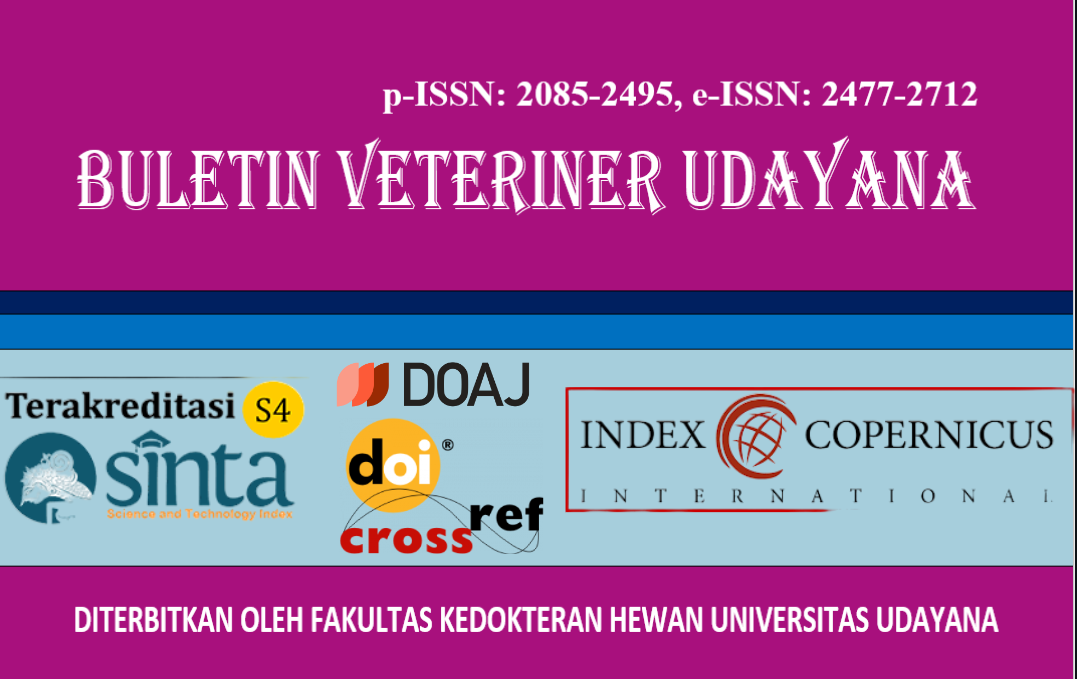MANAGEMENT OF TOXOCARIASIS IN A DOMESTIC FEMALE CAT
DOI:
https://doi.org/10.24843/bulvet.2025.v17.i03.p24Keywords:
Toxocariasis, cat, parasitic infection, anthelmintic therapyAbstract
Toxocariasis is one of the common parasitic disease affecting cats, especially in environments with poor hygiene standards. Cats can become infected by ingesting infective eggs through food and water. This paper aims to report the successful diagnosis and treatment of toxocariasis in a cat. A three-year-old female domestic cat named Pusicat, weighing 1.95 kg, experienced diarrhea lasting more than two months, with feces appearing dark brown to black. Physical examination revealed diarrhea accompanied by reddened, swollen, and sensitive anal mucosa upon palpation. Additionally, during a temperature check, the cat defecated, and the feces contained traces of blood. Laboratory tests included fecal examination using the native method, which detected Toxocara sp. eggs, and routine hematology testing, which indicated leukocytosis with neutrophilia. Based on anamnesis, physical examination, and supporting diagnostic tests, the cat was diagnosed with toxocariasis. The prescribed treatment included the anthelmintic pyrantel pamoate at a dose of 20 mg/kg body weight, administered orally once and repeated 14 days later; the probiotic Lacto-B (½ sachet); and kaolin-pectin at a dose of 2 ml/kg, administered orally every 12 hours. Additionally, the cat’s diet was changed to gastrointestinal wet food. A follow-up evaluation two weeks after treatment showed that the cat no longer had diarrhea, with feces of normal consistency. The anal mucosa appeared normal, pink in color, and no longer swollen. It is concluded that therapy using pyrantel pamoate, probiotics, and antibiotics, along with improved diet and sanitation, successfully accelerated the clinical recovery of the cat within two weeks. It is recommended to administer deworming medication regularly, maintain a clean environment, provide high-quality feed, and ensure access to boiled drinking water to prevent reinfection.




